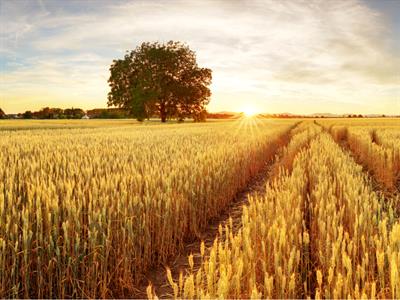
PUMPA - SMART LEARNING
எங்கள் ஆசிரியர்களுடன் 1-ஆன்-1 ஆலோசனை நேரத்தைப் பெறுங்கள். டாப்பர் ஆவதற்கு நாங்கள் பயிற்சி அளிப்போம்
Book Free DemoThe extent of the continent is responsible for the variety of climatic zones. These differences in climate contribute to a variety of agricultural industries in North America, which are often divided by climate zone: tropical zone, subtropical zone, cool temperate zone, and dry zone. North America is a major exporter of many foods and cash crops.

Crop harvesting
Despite the fact that only a meagre proportion of the total workforce is engaged in agriculture, America's agriculture is the most productive in the world. A significant amount of North American agriculture had become extensively mechanised and heavily dependent upon an integrated system of supporting agribusinesses, although traditional practices still exist in Mexico.
An extensive agriculture system is practised in Canada and USA. Both Canada and USA contribute significantly to wheat export. Wheat, Corn (Maise), Oats, Soybean, Barley and many other food crops are grown throughout the vast interior plains.
North Americans cultivate grains, legumes, fruits, vegetables, and plants for clothing and other non-food uses. Primetime farmers mostly practice monoculture, i.e. cultivating a single crop for their primary income in a very large area. Some small farms, along with other occupations, run some small farms.
Wheat
European settlers in North America introduced wheat. It is grown extensively in the Prairies (temperate grassland) of North America. North America is the largest exporter of wheat. Vast wheat-producing areas are called wheat belts.
Wheat is the staple food in Western diets. In the southern part of North America, the primary crop is winter wheat. It is planted in the fall, is dormant during the winter, completes its growth in spring, and is harvested in midsummer.

Wheat Field
Maize
Maize is the Native Food Crop of North America which is the main staple food grain in Mexico. It is grown in the southern Prairies. North America produces more than half of the world's total maize.
The United States is the largest producer of maize in the world.
The maize/corn belt (areas where corn is grown) is located between the Ohio River and the lower Missouri River. It receives ample water and strong summer sun, ideal for corn and soybeans.
Maize requires a longer growing season than wheat, so areas where it can be grown economically are limited.

Maize field
In fact, most of the corn grown in the Corn belt is feeder corn used as livestock feed, although a considerable amount is processed into human foods as well. Cattle, sheep, hogs, and other livestock are less likely to graze than eat corn-based feed.
Barley and Oats
Despite being one of the important crops of North America, it does not shape the region's economy
as rice and wheat do.

Barley grains
They are temperate crops, and they can withstand the cold climate and requires less water. The Barley is cultivated in the United States and is produced in Minnesota, North Dakota and Washington. Barley and Oats are used as livestock feed.
Cotton
Cotton requires a long growing season and relatively high rainfall levels; therefore, it is generally grown in the southern United States, often referred to as the Cotton Belt.

Cotton balls
Cotton grows well in black soil. Warm summers with frequent rainfall and fertile soil are favourable conditions for the growth of the cotton crop.
Cotton growing areas: Southern and Western States of USA. It is dominated in Texas, California, Mississippi, South of the Prairies and Mexico.
Other Important Crops
Sugarcane:Sugar cane is mainly cultivated in the subtropical region i.e. along the Gulf of Mexico, Parts of Central America and West Indies. It is an important cash crop of the West Indies.
Cuba is known as the “Sugar bowl of the world” and is the world's largest exporter of sugar.
It is raised in the same area where maize is grown. It is used for the extraction of edible oil.
Potatoes and Sugar beet:
Growing regions: Prairie Region, North Dakota and Minnesota
Sugar beet is used for making sugar. Potato and sugar beet are used to feed cattle and pigs.
Fruits:
Mainly citrus fruits are cultivated in Texas, California, the Great Lakes regions and St. Lawrence Valley. The important fruits of North America are Cranberries, Blueberries, Concord grapes, Strawberries, Gooseberries and other fruits.